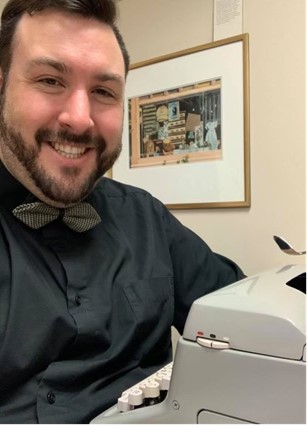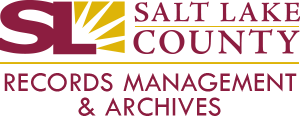Now that 2023 has come to a close, we look back on all of the changes and accomplishments from the past year. Records Management and Archives went through huge changes in our small staff throughout 2023.
Retirement: Hugh Johnson, Records Clerk
Hugh Johnson worked as a Records Clerk for Salt Lake County Records Management and Archives for 23 years, assisting county agencies with retention schedules, record requests, and many other tasks. Prior to working with us, Hugh worked for the Utah State Archives in their microfilm department. Having reached his 30 years service for government, he retired in May of 2023. We were devastated to hear that shortly after his retirement, Hugh passed away. We miss his generosity and steadfastness every day at the Archives.
Moving On: Daniel Cureton, Digital and Reference Archivist
Daniel Cureton, Digital and Reference Archivist, left the Salt Lake County Archives for a new position in September of 2023. Daniel worked with us for a little over four years, and was invaluable in setting up our new digitization lab along with providing excellent reference services to the public and county agencies. Many of our patrons will miss his insight and dedication to the research process. Daniel’s skills and knowledge will now benefit the Los Alamos National Laboratory as their Scientific and Technical Information Librarian.
New Employees
As detailed in an earlier entry, we also welcomed two new employees in 2023. Trey Coleman, Records Management and Archives Specialist, started in August and Kelsie Flack, Digital and Reference Archivist, joined us in September. Both have already seamlessly fit in at Salt Lake County, and readers will hear much more from them in the future.
More Records Online
We continued to digitize and upload county records to our online digital archives, including:
- Tax Appraisal Cards (1970s) and Land Title Certificates to their online, searchable applications.
- Land Claim Record Books
- Water Records Collection
- Tax Assessment Rolls (1853-1881)
- Additional Planning and Development records, including Board of Adjustment and Conditional Use Applications.
Additional records series will be digitized and uploaded to the online digital archives throughout 2024!




















